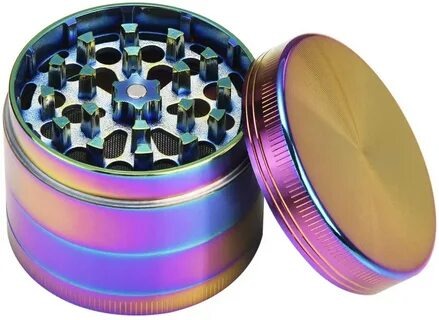The agriculture industry has always embraced innovation, from tractors to genetically modified seeds. Today, drones are the latest technological marvel poised to transform farming. With their ability to survey vast areas, analyze crops, and perform labor-intensive tasks, drones are paving the way for smarter, more efficient agriculture. According to a research report published by MarketsandMarkets, the agriculture drones market is valued at an estimated USD 2.01 billion in 2024. It is projected to grow at a compound annual growth rate (CAGR) of 32.0%, reaching USD 8.03 billion by 2029
What Are Agriculture Drones?
Agriculture drones are unmanned aerial vehicles (UAVs) specifically designed for agricultural purposes. Equipped with high-tech sensors, cameras, and software, they assist farmers in monitoring crop health, managing fields, and even spraying fertilizers and pesticides.
Benefits of Drones in Agriculture
Precision Farming: Reducing Waste, Boosting Yields
Drones offer precision farming by delivering real-time data. This allows farmers to:
- Apply fertilizers and pesticides only where needed.
- Monitor crop health with pinpoint accuracy.
- Reduce wastage of resources like water and chemicals.
Time-Saving Technology
Traditional field inspections can take hours or days. Drones accomplish these tasks in a fraction of the time, enabling faster decision-making.
Want to dive deeper? Get your PDF copy today
How Drones Are Used in Agriculture
Crop Monitoring and Health Analysis
With multispectral and thermal sensors, drones can detect issues like:
- Water stress
- Pest infestations
- Disease outbreaks
Early detection helps farmers take corrective actions promptly.
Precision Spraying
Drones equipped with spraying mechanisms ensure that pesticides and fertilizers are distributed evenly, reducing environmental impact and human exposure to harmful chemicals.
Soil and Field Analysis
Drones map topography and soil quality, helping farmers understand:
- Drainage patterns
- Fertility levels
- Erosion-prone areas
Livestock Monitoring
Beyond crops, drones are being used to monitor livestock, tracking animal movement, health, and location, especially in vast or remote pastures.
The Technology Behind Agriculture Drones
Agriculture drones are powered by advanced technology, including:
- GPS Navigation: Ensures precision in mapping and spraying tasks.
- AI and Machine Learning: Provides intelligent insights from collected data.
- High-Resolution Cameras: Deliver detailed imagery for accurate field analysis.
Challenges and Limitations
While drones offer immense potential, they face several challenges:
- High Initial Costs: Despite long-term benefits, the upfront investment can be prohibitive.
- Regulatory Barriers: Many countries have strict regulations on drone usage.
- Skill Requirements: Operating and maintaining drones requires specialized knowledge.
Success Stories: Drones in Action
Farmers worldwide are already reaping the benefits of drones:
- In India, drones are improving irrigation management in drought-prone regions.
- In the U.S., vineyards use drones to monitor grape ripeness and optimize harvest timing.
- In Africa, drones are combating locust outbreaks, saving millions in crop losses.
The Future of Agriculture Drones
As technology advances, drones will become even more integral to farming. Innovations on the horizon include:
- Autonomous drones for round-the-clock operations.
- Enhanced AI for predictive analysis.
- Integration with IoT devices for a fully connected farm ecosystem.
Taking Agriculture to New Heights
Agriculture drones are more than just a trend; they are a solution to the growing challenges of feeding a booming global population while ensuring sustainability. By combining cutting-edge technology with traditional farming wisdom, drones are propelling agriculture into a new era of efficiency and productivity.
Opportunities: High adoption of aerial data collection tools in agriculture
High adoption of aerial data collection tools in agriculture holds immense opportunity for the agriculture drones market. As farmers want to boost yields and their uses in resource optimization, precision agricultural tools are in increased demand; drones offer sensors and timely data for crop health and soil conditions. Efficiencies and accuracies increase the appealability of aerial data collection, and more farmers are adopting drone technology. Drones combined with emerging technologies in the form of machine learning and AI make them robust for position and to improve broadband agricultural data systems. Moreover, many industries use drones, and the adoption rate of tools required to collect aerial data is high in the construction, agriculture, and mining industries. For instance, agriculture experts and insurance companies use DroneDeploy’s SkyClaim app to detect crop damage and determine loss estimates using computer vision and AI.
Moreover, as farmers emphasize yield optimization and resource utilization more, the use of precision agriculture tools and drones increases. Drones have advanced sensors and real-time data for monitoring crop health and soil conditions. Their efficiency and accuracy appeal to more farmers who have become open to drone technology.
Challenges: Management in data collection by agriculture drones
Management in data collection by agriculture drones is a huge challenge for the agriculture drones market. Production of large volumes of data creates new challenges for farmers and agronomists in processing and interpreting the information; valuable insights may be lost within volumes of data. Connecting drone data to farm management systems can pose a challenge, as resources, skill, and even additional power take over the process. Environmental conditions and reliability in drone calibration also impact the quality and accuracy of the data, making this a complex challenge to effective analysis and decision-making. In addition, data management is very technical in most cases, requiring specialized skills in data analysis and GIS, hence limiting the ability of most farmers to take full advantage of drone data.



